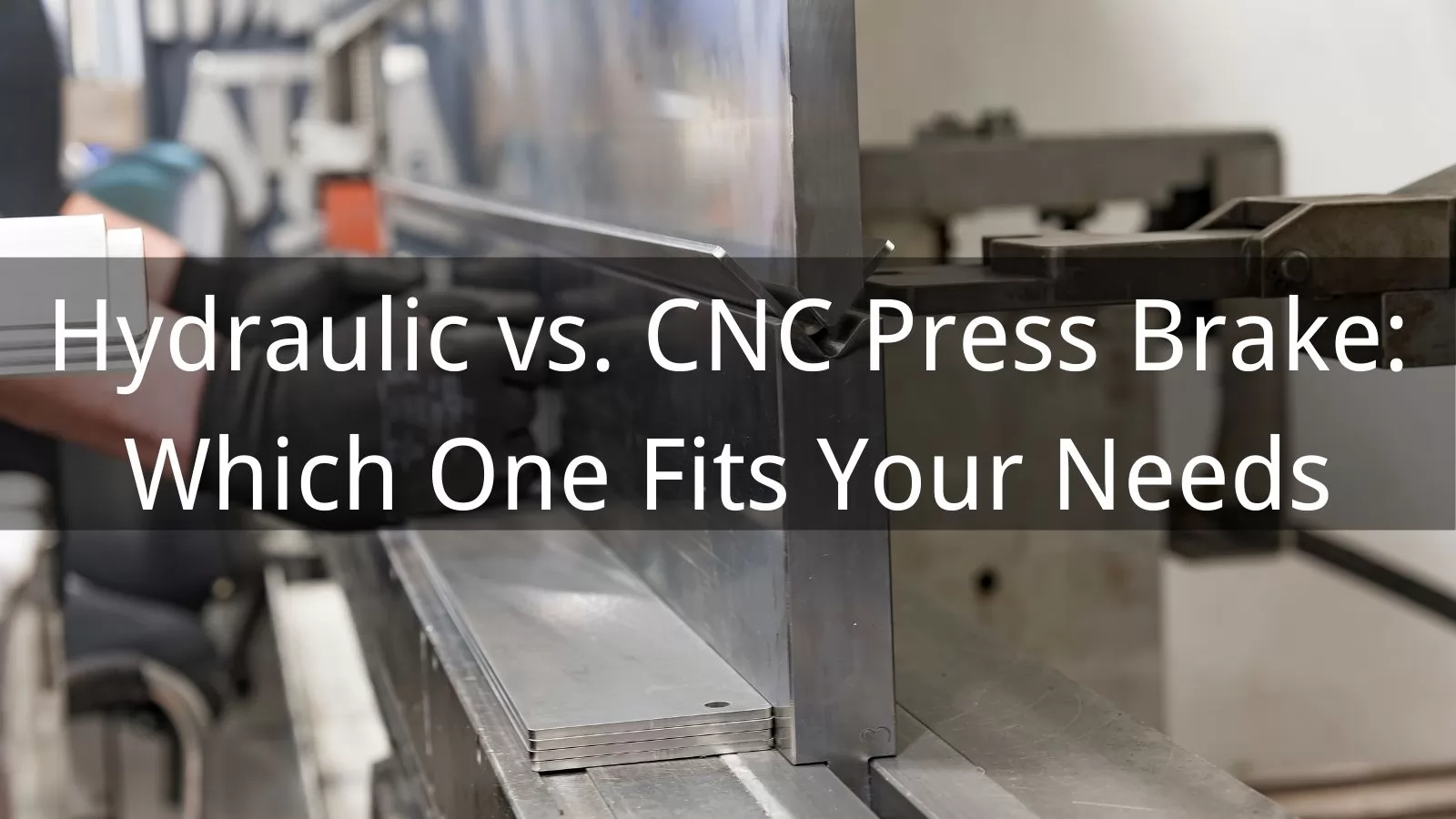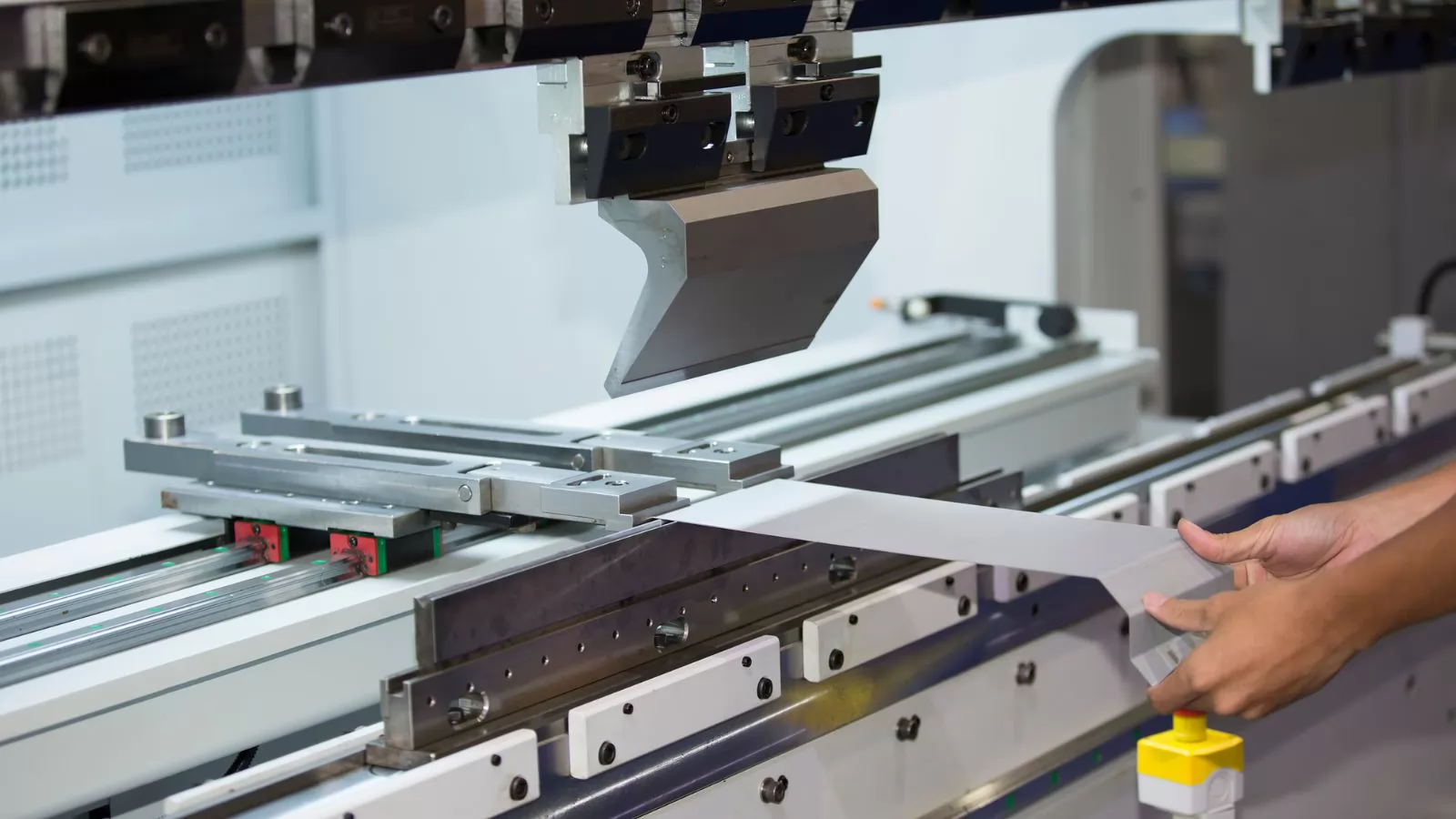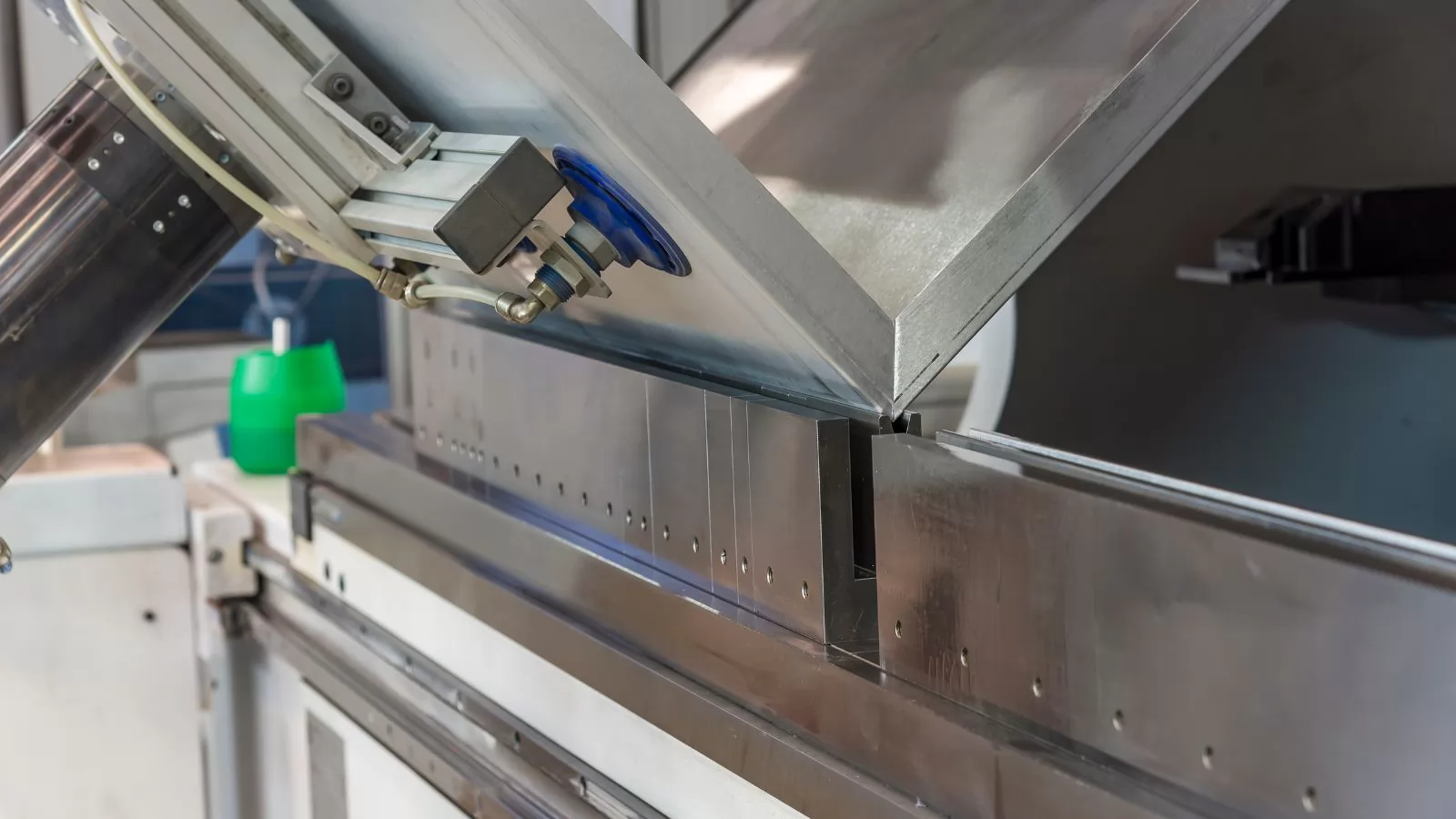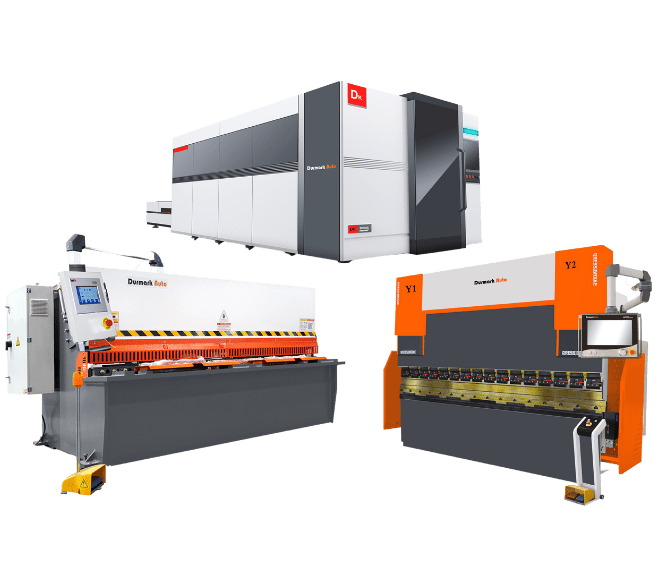
Request a Quote

Request a Quote


Choosing the right press brake is crucial for optimizing your manufacturing process. With the options of hydraulic and CNC press brakes available, understanding their differences can help you make an informed decision. Each type has its strengths, and selecting the one that fits your production needs, budget, and operational goals will ensure maximum efficiency and precision in your projects.
A hydraulic press brake is a machine used to bend and shape sheet metal by applying hydraulic pressure. It uses hydraulic cylinders to move a ram, pressing the material into a die to form precise angles and shapes. Known for their strength and durability, hydraulic press brakes are ideal for heavy-duty bending tasks.
They offer consistent force throughout the stroke, making them suitable for a wide range of materials and thicknesses. While not as fast or automated as CNC models, hydraulic press brakes are reliable, cost-effective, and widely used in metal fabrication industries.
CNC press brakes use Computer Numerical Control to automate the bending process, offering unmatched precision and repeatability. Unlike manual or hydraulic-only machines, CNC systems allow operators to program exact angles, dimensions, and bending sequences. This reduces human error, speeds up production, and ensures consistent quality across batches.
CNC press brakes are ideal for complex parts, high-volume jobs, and industries that demand accuracy, such as aerospace, automotive, and electronics. With features like touchscreen interfaces, 3D simulations, and automatic tool changes, CNC machines bring smart manufacturing to the shop floor. Although the upfront investment is higher, the long-term efficiency, labor savings, and reduced waste often justify the cost.

1.Control System
Hydraulic press brakes use manual or semi-automatic controls, requiring more operator input.
CNC press brakes are fully automated, using computer programming for precise, repeatable bends with minimal human error.
2.Accuracy & Precision
Hydraulic models offer decent accuracy but depend on operator skill.
CNC press brakes provide superior precision, ideal for complex, high-tolerance bending thanks to digital positioning systems and backgauges.
3.Speed & Efficiency
Hydraulic presses are generally slower, especially for multi-step jobs.
CNC presses offer faster cycle times, quicker setups, and higher throughput, making them better suited for large-volume production runs.
4.Ease of Use
Hydraulic presses require skilled operators and manual adjustments.
CNC presses are user-friendly once programmed, offering touchscreens, stored profiles, and automated sequences for consistent output.
5.Flexibility & Complexity
Hydraulic presses are best for simple, repetitive tasks with fewer variables.
CNC presses handle a wider range of parts and complex bends, allowing quick changeovers and customizations without tool changes.
6.Cost & Investment
Hydraulic presses are more affordable upfront, with lower initial costs.
CNC presses require a higher investment but offer long-term savings through efficiency, reduced scrap, and lower labor costs.
7.Maintenance Requirements
Hydraulic systems need regular fluid checks and pressure calibration.
CNC machines require less mechanical maintenance but need software updates and occasional recalibration of sensors and controls.
If you run high-volume or repetitive jobs, a CNC press brake is ideal due to its automation and consistency. For lower volumes or simpler tasks, a hydraulic press brake may offer sufficient performance at a lower cost.
Heavier materials or thicker sheets require higher tonnage, which can influence whether a hydraulic or CNC model is better. Make sure the machine you choose can handle your most demanding material specs.
CNC press brakes offer superior accuracy and repeatability, making them perfect for complex bends or tight tolerances. If your work requires precision parts, CNC is usually the better long-term investment.
CNC machines reduce the need for highly skilled operators by automating the setup and bend sequence. Hydraulic press brakes may require more hands-on expertise, especially for intricate or multi-step bends.
While hydraulic models are more affordable upfront, CNC press brakes often provide better ROI through faster production, fewer errors, and lower labor costs. Balance your budget with expected efficiency gains.
CNC machines often take up more space and may require more power. Consider your workshop layout, available power sources, and if you have room to scale operations in the future.
If you're planning for future automation or smart factory integration, CNC press brakes are designed for that. Many support IoT systems, remote diagnostics, and ERP software integration for better workflow control.

Hydraulic press brakes typically have a lower upfront cost than CNC models. They're ideal for businesses with limited budgets or simpler bending tasks. CNC press brakes, while more expensive initially, offer greater precision and automation features that justify the higher price in high-volume production.
Hydraulic machines often consume more energy during operation due to continuous power usage. In contrast, CNC press brakes are more energy-efficient and reduce waste through accurate programming, which leads to lower long-term operating costs, especially in repetitive production environments.
Hydraulic press brakes require skilled manual operation, which can increase labor costs and slow production. CNC press brakes, though needing initial training, streamline workflows and reduce the need for constant operator input, helping cut labor costs over time and increasing efficiency.
Hydraulic systems may need frequent fluid checks, pressure adjustments, and component replacements, adding to maintenance costs. CNC press brakes generally require less frequent maintenance, focusing more on software updates and sensor calibration, making them more cost-effective in the long run.
CNC press brakes offer a higher return on investment over time through reduced waste, faster setup, and increased productivity. Hydraulic models may provide solid ROI for low-volume or simpler jobs, but CNC systems outperform in scalability, accuracy, and long-term cost savings.
Inspect the hydraulic system periodically to ensure proper pressure levels, check for fluid leaks, and verify that all connections are tight. Low hydraulic fluid can lead to malfunctioning, while leaks may cause safety hazards. Regular maintenance also involves cleaning the reservoir to prevent contamination. This practice extends the lifespan of the press brake and ensures consistent performance.
Over time, components like the punches, dies, and back gauges wear out. Regularly inspect these parts for signs of wear, cracks, or damage. Worn-out dies and punches reduce precision and affect the quality of the finished product. Replacing these components at the first sign of wear ensures optimal bending accuracy and prevents unnecessary downtime.
For CNC press brakes, the electrical and control systems need routine maintenance. Check the wiring, connections, and circuit boards for any signs of wear or damage. Keep the software and control systems up to date. Regular calibration of CNC systems ensures that the machine operates with high precision and that it’s aligned with the necessary specifications.
Lubrication is crucial for reducing friction between moving parts. Regularly lubricate the ram, slide, and other moving components as per the manufacturer’s recommendations. Insufficient lubrication can cause increased wear and tear, leading to reduced accuracy and machine failure. Proper lubrication minimizes downtime, increases machine efficiency, and extends the press brake’s service life.
Keep the press brake clean and free of debris, as dust, metal shavings, and dirt can affect the machine’s performance. Clean the machine thoroughly after each use, especially around the bending area and the hydraulic components. A clean press brake reduces the risk of malfunction and ensures smooth operations. It also helps identify any potential issues early on.
Regularly check the alignment of the press brake, including the back gauge, tool holders, and bending tools. Misalignment can lead to uneven bending, which compromises the quality of the final product. Calibration of the machine ensures that it maintains its accuracy over time, reducing the likelihood of defects in the material being processed.
Ensure that the press brake is properly stored when not in use. Avoid placing heavy or abrasive materials on the machine, which could cause damage. During non-operational periods, cover the machine to protect it from dust, moisture, and other environmental factors. Proper handling of the machine during setup and shutdown reduces the risk of unnecessary wear.
When deciding between a hydraulic and a CNC press brake, it ultimately depends on your production needs. If you're looking for a cost-effective, reliable option for simpler tasks with moderate precision, a hydraulic press brake is a solid choice. However, if your business demands high precision, repeatability, and automation for complex designs, a CNC press brake is the better investment.
Consider factors like material type, production volume, and budget to make the right decision for your operations. Always evaluate long-term ROI and the machine's ability to scale with your business needs.
Ultimately, the decision between a hydraulic or CNC press brake depends on your specific requirements. If you need cost-effective, reliable performance for simpler tasks, a hydraulic press brake is ideal. For advanced precision and automation, a CNC press brake will be a better choice. For expert advice and tailored recommendations, reach out to Durmark today for a consultation or request a free quote.
.png)



